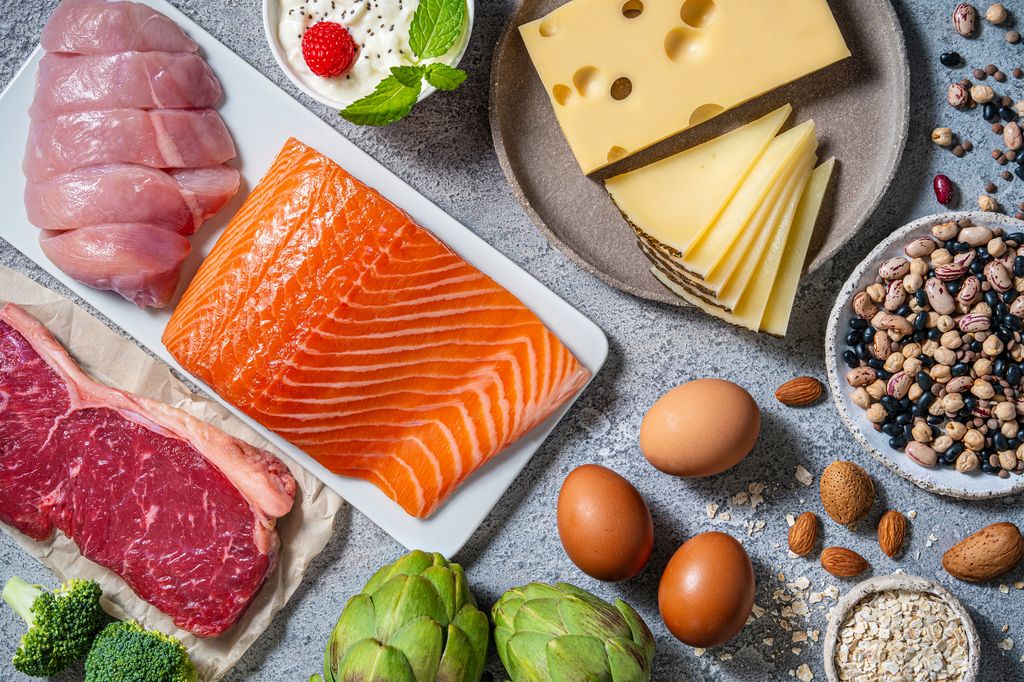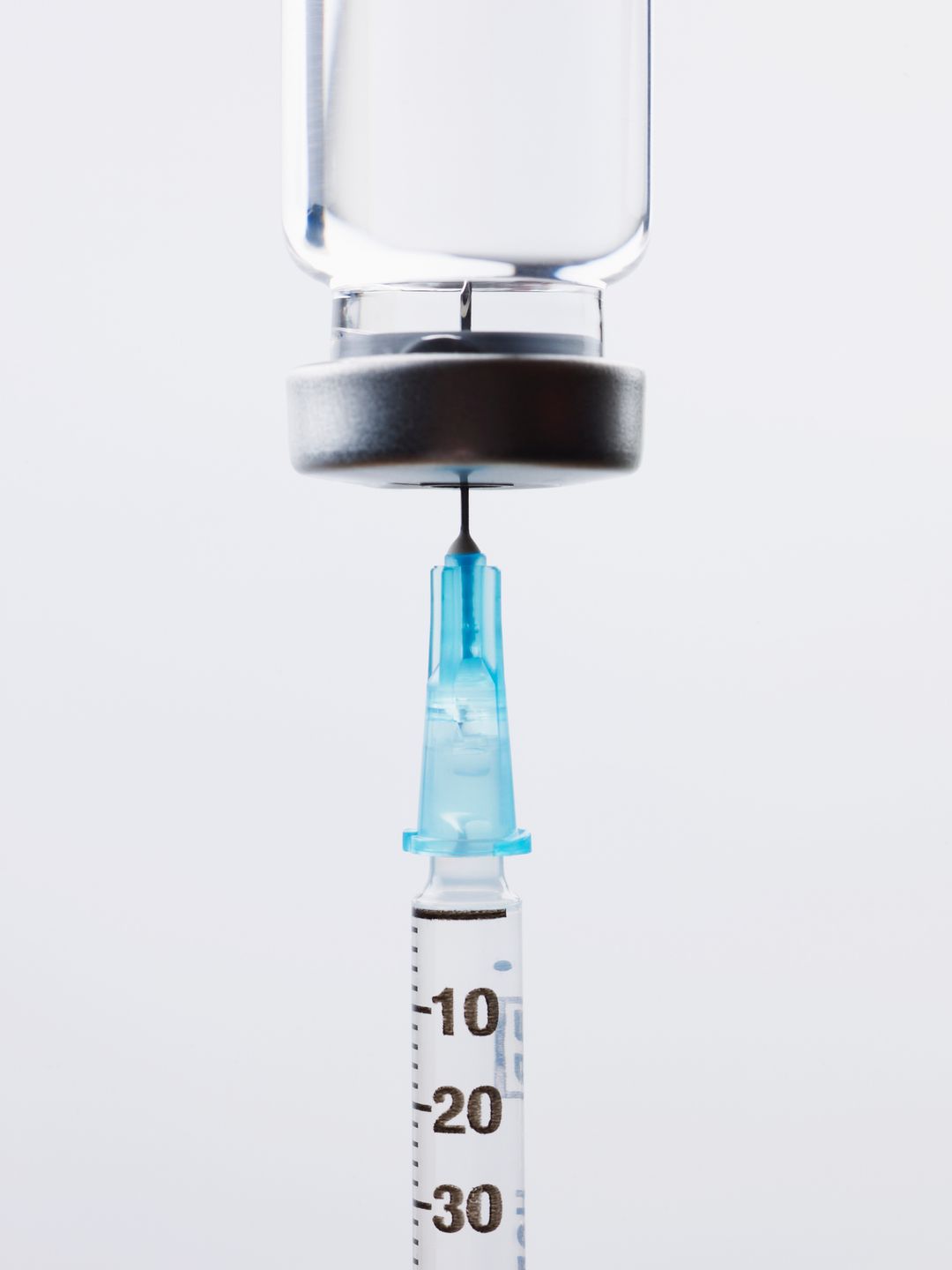Ozempic. Mounjaro. Wegovy. These GLP-1 medications have become household names, sparking a global conversation around weight loss, metabolic health and appetite control. But while these injectable medications have gained in popularity for their dramatic effects, few people realise that your body already produces its own GLP-1, and that what you eat can help enhance it, naturally.
So what exactly is GLP-1? Short for glucagon-like peptide-1, GLP-1 is a hormone released by the gut when we eat. It plays a vital role in regulating insulin, controlling blood sugar, slowing down digestion and reducing appetite. In short, it helps your body feel fuller for longer and supports healthy weight management. The medications work by mimicking this natural hormone, but as effective as they are, they’re not without side effects. Nausea, diarrhoea, and even muscle loss have been reported. Plus, most people must continue taking these drugs long-term to maintain the results.
The good news? There are everyday foods that can help your body do the same thing, for a fraction of the cost and with added health benefits. Here are four smart ways to naturally boost your GLP-1 levels and support your wellbeing through food.
Add more soluble fibre to your daily meals
Soluble fibre is one of the most underrated heroes of gut health. Unlike insoluble fibre, it dissolves in water and forms a gel-like substance in the gut. As it moves through your digestive system, it’s fermented by friendly gut bacteria in your colon, creating compounds called short-chain fatty acids, including butyrate, that help stimulate GLP-1 production.
You’ll find soluble fibre in a wide range of delicious whole foods. Whole or steel-cut oats, black beans, chickpeas, oranges, apricots, mangos, broccoli and Brussels sprouts are just a few examples. The benefits don’t stop at weight management. Soluble fibre is also known to reduce cholesterol, improve blood sugar regulation and lower the risk of heart disease. Making fibre-rich foods a regular part of your diet is one of the easiest and most effective ways to support both metabolic health and gut function.
Increase your intake of lean protein, especially from plant sources
Protein is known to be the most satiating macronutrient, and it turns out GLP-1 is one of the reasons why. As proteins are broken down in the gut, they stimulate the release of GLP-1 by activating receptors on specialised cells in the intestinal lining. The result? You feel fuller, for longer.
When it comes to boosting GLP-1 through protein, plant-based options can be particularly powerful. Lentils, edamame, beans, seeds and nuts are excellent sources. For those who enjoy animal-based proteins, eggs, chicken, lean beef and fish all contribute positively. Ideally, aim for around 0.8 to 1 gram of protein per kilogram of body weight per day, and lean toward the higher end of that range if you’re actively losing weight or managing blood sugar.
A balanced intake of protein throughout the day, including breakfast, can be a game changer for managing appetite, supporting muscle retention and maintaining steady energy.
Incorporate healthy fats, particularly monounsaturated and polyunsaturated types
Healthy fats are not only essential for brain and hormone health, they also help stimulate GLP-1 production. The most effective types are monounsaturated and polyunsaturated fats, which can be found in everyday favourites like avocados, extra virgin olive oil, almonds, walnuts, salmon and tofu.
In one study, participants with type 2 diabetes showed a significantly higher GLP-1 response after a meal that included olive oil compared to one made with butter. This suggests that the quality of fat, not just the amount, plays an important role in hormonal signalling.
Beyond boosting GLP-1, healthy fats are linked to better heart health, improved cholesterol levels, reduced inflammation and more stable blood sugar. Including a portion of these fats in your meals not only enhances flavour and satisfaction but helps keep your body’s metabolic responses working in your favour.
Choose polyphenol-rich foods to feed your gut and stimulate GLP-1
Polyphenols are naturally occurring plant compounds with powerful antioxidant properties. But what many people don’t realise is that certain polyphenols also support GLP-1 activity, either by stimulating the L-cells in your gut to release more of the hormone, or by supporting the growth of the right kind of bacteria in your microbiome.
Spinach, green tea, celery, asparagus, berries, apples and even coffee are packed with these beneficial compounds. By regularly including a variety of these foods in your diet, you can support GLP-1 production while also gaining the added benefits of improved blood pressure, reduced inflammation, and more balanced blood sugar.
Do food-based GLP-1 boosters really work?
While GLP-1 medications often deliver dramatic results quickly, food-based strategies can still be remarkably effective. In fact, a 2017 review found that increasing soluble fibre alone was linked to measurable weight loss within several weeks. The results may not be instant, but they are steady and, importantly, sustainable.
Dietary GLP-1 boosters work best when they become part of your long-term routine. Not only do they help to regulate appetite and improve metabolic function, but they also support every other aspect of your health, from cardiovascular wellness to digestive balance and hormone regulation.
These food choices also crowd out ultra-processed foods — the biscuits, chips, sugary drinks and snack bars that are linked to inflammation, cravings and shortened life expectancy. Simply replacing processed choices with GLP-1-enhancing whole foods can trigger a powerful shift in both how you feel and how your body functions.
Why now is the time to use food as medicine
With rates of obesity, type 2 diabetes and cardiovascular disease continuing to rise, now more than ever, the role of diet is central. Government data shows that 90 percent of adults do not eat the recommended daily intake of fruits and vegetables, and that deficiency is contributing to many of the chronic diseases that GLP-1 medications are prescribed to treat.
While medications like Ozempic and Wegovy have their place and can be transformative for some, they are not the only option. Supporting your body’s natural hormone responses with targeted food choices can offer similar benefits, often without the side effects or the lifelong price tag.
By understanding how food influences hormones like GLP-1, we empower ourselves to take a proactive approach to health that is natural, nourishing and sustainable. The message is simple but powerful: the way we eat can shape our hormones, our metabolism and our quality of life.
So next time you’re planning a meal, think of it not just as fuel, but as a tool. Because sometimes, the best medicine really does come from the kitchen.
Faye James is an accredited nutritionist and author of The Perimenopause Plan, and Menopause Diet. She specialises in nutrition for women over 40 and life-changing menopause retreats
Read the full article here










